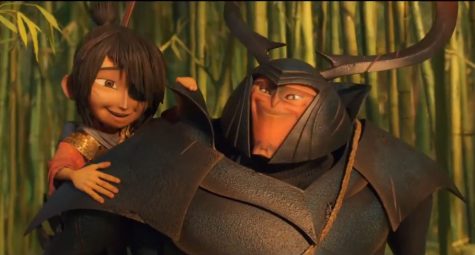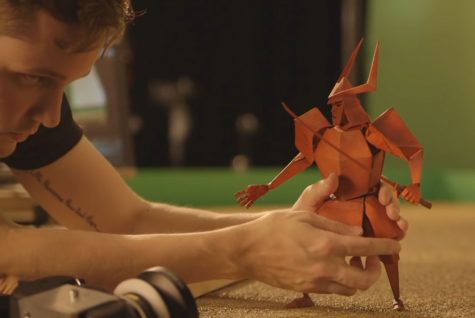Kubo voice actor Art Parkinson is best known for his role of Rickon Stark on HBO’s “Game of Thrones.”
‘Kubo’ permanently raises animation standard
September 2, 2016
“Kubo and the Two Strings” was, to put it simply, a magical (albeit strange) experience.
This film featured a bizarre combination of supernatural origami, a human-sized talking beetle, random interjections of George Takei’s soothing voice and familial turmoil which made it oddly endearing; I almost managed to forget the gaping hole in my wallet after forking over $10 for a matinee movie ticket.
LAIKA, the animation studio responsible for critically-acclaimed pictures such as “Coraline” and “ParaNorman” and “The Boxtrolls,” truly outdid itself in producing “Kubo,” its fourth full-length movie. On a budget of only $60 million (compared to an average movie’s $100 million), LAIKA crafted a beautiful coming-of-age story in its signature stop-motion style.

Kubo’s acquaintance Beetle provides sarcastic comic relief in an otherwise serious film.
Even as one of the few people in the movie theater over the age of 10, “Kubo” engrossed me on a shockingly mature level. The story follows the bittersweet adventures of (you guessed it) Kubo (Art Parkinson), a young Japanese boy who lives in a mountaintop cave with his mother (Charlize Theron), who is implied to have dementia. Each day, Kubo grabs his shamisen (a traditional Japanese instrument) and a stack of folding paper before travelling into the village. Like any good street performer, he sets up shop in the town square where he quickly draws a regular crowd. Although his shamisen skills are quite polished, it’s not just Kubo’s music that attracts attention– it’s the fact that his paper squares magically fold themselves into monsters and samurai while he plays. Through these origami reenactments, we learn the story of Kubo’s missing father, Hanzo (Matthew McConaughey), and villainous grandfather, known cryptically as the Moon King (Ralph Fiennes), who has a “Coraline”-esque obsession with stealing Kubo’s eye.

“Kubo” utilized a technique known as stop-motion animation in which physical figures are moved through a sequence and photographed after each slight movement. When the footage is put together, it appears as though the object is in motion.
While the plot of the movie admittedly tended to lag at some points, including a few overly-predictable twists, its overarching themes of grief, family and perseverance were enough to force me to form intense emotional attachments with fictional characters. Wrap that up in a ribbon of flawless stop-motion animation, impeccable soundtrack and breathtaking CGI landscapes, and you’ve got yourself a beautifully unforgettable adventure.
As Kubo himself says in the opening scenes, “don’t blink. Pay careful attention to everything you see, no matter how unusual it may seem.” Because while this film may be one of the strangest combinations of terror and beauty to grace the ever-growing front of animation, “Kubo and the Two Strings” is a dreamlike journey that you’ll never want to end.
